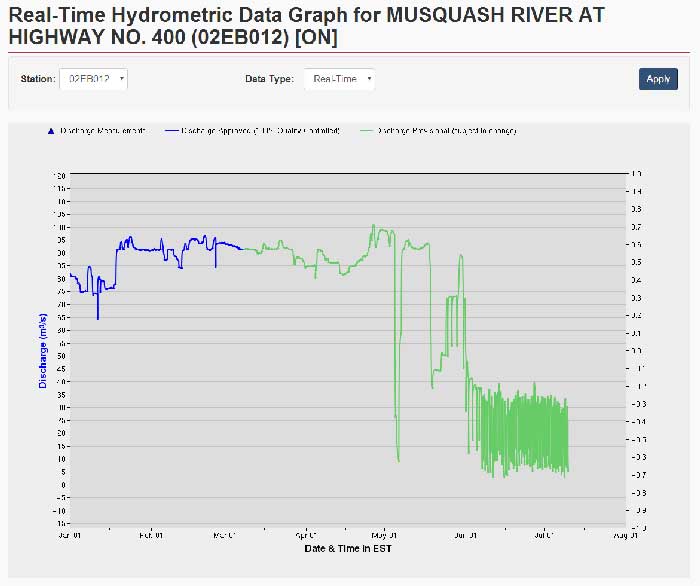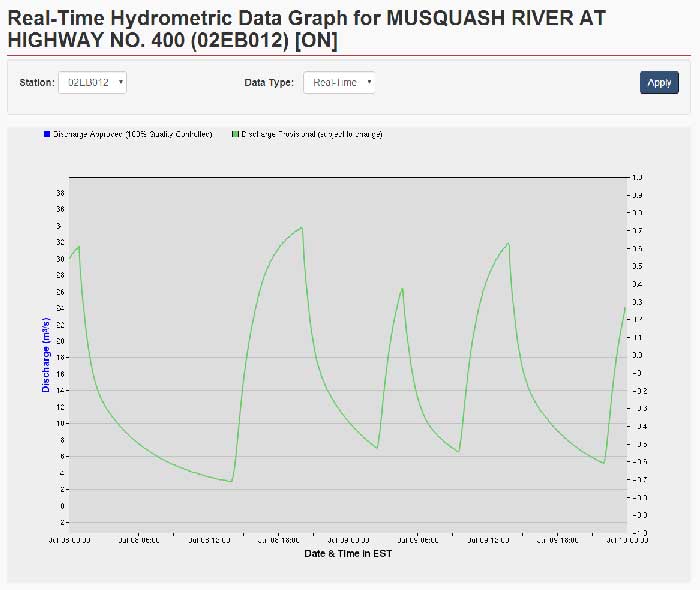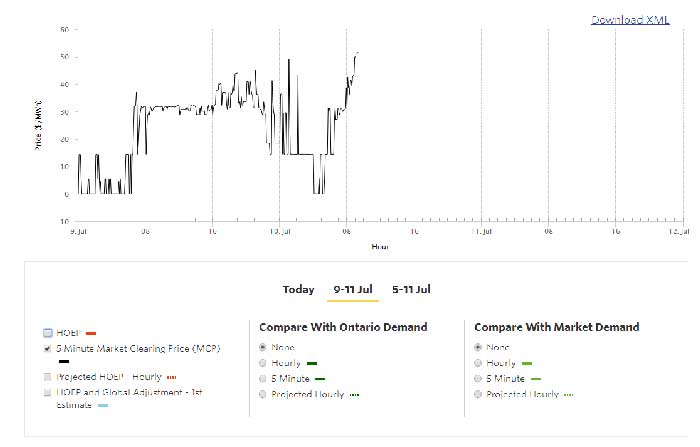Summary
The proposed hydro-electric generating station at the Bala falls would produce less than 8% of its rated output when this power would be needed the most – in the summer – making it almost a useless source of energy.
The only reason the developer is proceeding with this proposed project is because Ontarians would be forced to pay them a $100,000,000 subsidy for the power that would be produced in the spring and fall – when the power isn’t needed and is available at far lower cost from other existing sources.
Detail
On July 10, 2018, Bracebridge Generation (@BracebridgeGen) sent the following three tweets …
1/3 A period of below-average precipitation in the region has resulted in low flows through rivers, streams & lakes in the Seguin River watershed. Evaporation rates with this hot weather is slowly taking its toll on water levels. Dams are fully logged in & outflows…
2/3 outflows have been reduced to minimum. Some lakes in the system will begin to have below average water levels if precipitation accumulations don’t increase. The 14-day forecast suggests continued high temperatures with some precipitation.
3/3 Lower precipitation amounts under these dry conditions however, tend to be absorbed by vegetation and soils and don’t add any significant contributions to the watershed.
This reminds us that rivers in Muskoka have little flow in the summer. This is significant because the less flow, the less output from hydro-electric generating stations.
The graph above (click on any of these graphics for a larger view) shows the temperature in Toronto from June 10, to July 10, 2018, with temperatures above 30 °C on more than ⅓ of the days. As we all know; it gets hot in the summer, it doesn’t rain much, and as noted above, water evaporates, further reducing the water in Muskoka’s lakes and rivers.
The graph above shows the temperature for the 2½ days from midnight July 8 to noon July 10, 2018. On July 9, 2018 the temperature was above 30 °C from 9:00 am to 9:00 pm, as often happens in the summer. This is when Ontario needs the most electrical power, due to air conditioners. To encourage power generation during peak-demand times, the Bala proponent would be paid 17.685 ¢/kW•h for power produced every weekday afternoon.
The graph above shows the rate of flow of water in the Moon River from January 1 to July 9, 2018. It shows a flow of about 90 m³/s from January 20 to May 20, 2018, when the proposed hydro-electric generating station at the Bala falls would run at full capacity. But starting in June, the flow cycles between about 5 and 30 m³/s, the next graph shows this in more detail.
The graph above shows the times that Ontario Power Generation was able to operate their two hydro-electric generating stations on the Moon River. These are the Ragged Rapids and Big Eddy stations, which need a minimum flow of 26 m³/s to operate. The graph shows that on July 9, 2018 these stations operated; from 2:30 am to 4:30 am, from 9:30 am to 1:30 pm, and for another 90 minutes beginning at 10:30 pm.
As turbines are not efficient at low flows, this means that these generating stations operated at less than 25% of their generation capacity for 7½ hours in a 24-hour day. This is a capacity factor of less than (7½ / 24) x 25% = 8%, which would never justify construction except that the proposed generating station would operate at full capacity at other times of the year, such as spring and fall. Unfortunately Ontario has a surplus of electrical power during the spring and fall, as people are not usually using their furnaces or air conditioners at these times.
The graph above shows that on July 9, 2018 Ontarians paid an average of less than 4 ¢/kW•h for electricity, yet the Bala proponent would have been paid 17.685 ¢/kW•h. This huge and unnecessary subsidy would total more than $100,000,000 over the 40-year contract for this unnecessary generating station.
That is, Ontarians would be forced to pay this private developer a subsidy of over $100,000,000 (details here) for power that; would not be available when it is needed, would be mostly generated when it is not needed, and would be available from other sources at far lower cost.
On July 10, 2018 the Ontario PC government confirmed they will stop the proposed – and destructive – White Pines wind turbine project (CBC website here, copy here). We look forward to the PCs keeping their commitment to stopping the too-dangerous, unnecessary, and unjustifiably-expensive proposed hydro-electric generating station at the Bala falls.




